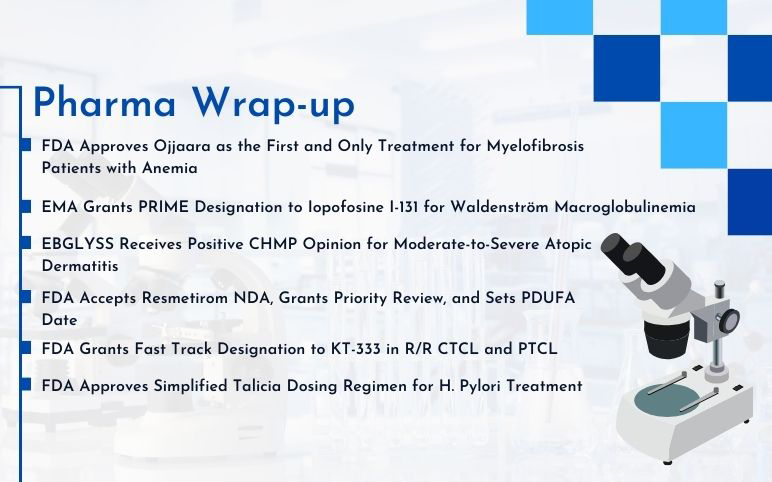
Jul 08, 2019
Cutaneous T-cell lymphoma (CTCL) is a group of lymphoproliferative disorders characterized by localization of neoplastic T lymphocytes to the skin. Cutaneous T-cell lymphoma can cause rash-like skin redness, slightly raised or scaly round patches on the skin, itchy skin, discoloured patches on the skin, enlarged lymph nodes, hair loss, and, sometimes, skin tumors. The cause of CTCL is not fully understood yet. But researchers from various organizations blame mutations in cells for Cutaneous T-cell lymphoma.
CTCL is the most common type of skin lymphoma collectively called non-Hodgkin lymphoma (NHL). According to DelveInsight, more than 3 out of every 4 skin lymphomas diagnosed are CTCLs. The total Cutaneous T-cell lymphoma incidence in 7MM was estimated to be approximately 8400 cases in 2016. Moreover, the highest CTCL incidence was observed in the US with near about 3,200 cases, followed by EU5. Specifically talking about the EU5 countries, the UK had the highest Cutaneous T- Cell Lymphoma incident population with 1,575 cases, followed by Germany with 876 CTCL cases, with Spain accounting for the lowest CTCL incident population of 372. Surprisingly enough, Japan had 1,270 Cutaneous T- Cell Lymphoma incident cases, which is higher than most of the EU5 countries. Cutaneous T-Cell Lymphoma Mycosis fungoides (MF) incidence, which is the most common type of CTCL was estimated to be around 1,700 cases in the US, which have been increasing since the 1970s. CTCL is known to affect men more than women, accounting for over 53% of total CTCL cases.
The Cutaneous T-Cell Lymphoma treatment depends on the extent and severity of the T-cell lymphoma. Most people are prescribed and treated with Topical therapies such as skin care ointments, creams and gels to be applied over the affected skin area several times to control itchiness. The Cutaneous T-Cell Lymphoma therapeutic market includes corticosteroids, retinoids, imiquimod (Aldara), ultraviolet A irradiation (PUVA), and total skin electron beam therapy as early stage Topical therapies. Corticosteroids are administered to treat small patches of affected of skin, and in the long term, it leads to thinning of the skin. Topical retinoids such as bexarotene (gel and oral) and tazarotene interfere with the production of tumor cells and are available in topical (gel) and oral formulations. Whereas, Retinoids work by encouraging tumor cell death and boosting the immune reaction. Patients administered with oral bexarotene develop hypothyroidism (underactive thyroid) and elevated cholesterol levels, which then again treated with other symptomatic medications. There are other side effects of the available CTCL therapies such as headache, nausea, fatigue, and sun sensitivity. People with diabetics may experience hypoglycemia and should monitor their blood sugar carefully. At advanced stages of lymphoma, Systemic therapies are introduced. These include interferon alpha injections, stem cell transplant, alemtuzumab (MabCampath) and other chemotherapy regimens. The Cutaneous T-Cell Lymphoma therapeutic market includes Istodax (romidepsin), Valchlor (mechlorethamine), Uvadex (methoxsalen), Targretin (bexarotene) and Zolinza (vorinostat) as FDA approved drugs.
The Cutaneous T-Cell Lymphoma emerging drugs are ought to change the CTCL market landscape for the forecast period 2018-27. The ongoing clinical trials of Remetinostat (Medivir AB), Resminostat (4SC AG), and SGX301 (Soligenix) are coming out with positive results going to boost the Cutaneous T-Cell Lymphoma market size. SGX301 is a first-in-class photodynamic therapy, and has received Fast-track and Orphan drug designation from both USFDA and EMA and additional PIM (Promising Innovative Medicine) designation in UK from MHRA, to facilitate its early access, for severely ill patients. On the other hand, Remetinostat, which is in Phase II stage of development by Medivir AB shall be the 1st HDAC inhibitor to be used in early stage of CTCL as a first line of therapy.
As per studies carried out by DelveInsight, the United States had the highest Cutaneous T-cell Lymphoma market share in 2016, followed by EU5 (Germany, France, Italy, Spain & UK) and Japan. The CTCL market size for the Early Stage First Line and Second Line Therapies of CTCL in the United States was found to be approx. USD 28.22 Million and USD 265.3 Million respectively. The Cutaneous T-cell Lymphoma market size for the period 2016-2027 was estimated at USD 698.47 Billion in 7MM. The CTCL market share is going to accelerate for the forecast period 2018-2027. DelveInisght assesses that with the launch of emerging drugs, and advancements in the CTCL diagnostic methods, the Cutaneous T-cell Lymphoma market share is expected to garner positive results.

